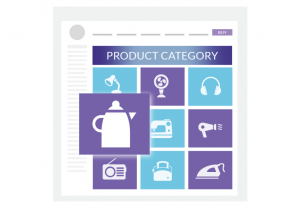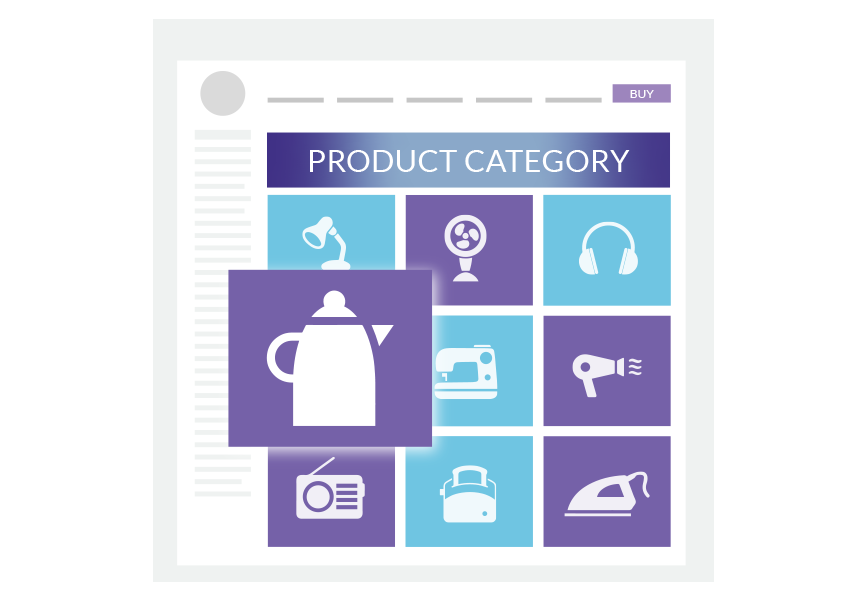
Dropshipping – definition and pricing strategies
- 04 May 2021

Online sales have been steadily gaining popularity. According to Statista, e-commerce sales will increase by 14.3% in 2021. The growing competitiveness in this market makes entrepreneurs constantly look for new ways to maximize profit and optimize costs. That’s how the dropshipping model gained popularity.
What is it, how does it work and what do you need to know before starting a dropshipping business?
Dropshipping definition
What is dropshipping? It is a business model in which an online store is run without holding any inventory. In this model, the whole process of storing and shipping the order to the consumer is transferred to the product supplier – usually a wholesaler or manufacturer. It means that the store owner may fully focus on the aspects more crucial for the business development, such as customer acquisition, marketing, and customer service.
What is worth mentioning is that running a dropshipping business does not require significant investments in goods. The products are constantly available in the manufacturer’s warehouse and are only paid for when the customer places an order in the store.
How does dropshipping work?
Running a dropshipping business has a lot in common with an AGILE business approach – it allows you to “test” product assortment without the need to make a huge upfront investment.
However, before making a decision about running the dropshipping business, you should consider its advantages and disadvantages.
Advantages of dropshipping
The key advantages of dropshipping are:
- no risk of investments in an unsuccessful assortment
- a large budget to start with (when it comes to the value of products offered)
- time savings – lack of such daily duties as packing or shipping the orders
- lower costs – no need to hire additional staff, rent a warehouse or an office
- possibility of focusing on key tasks for business development, such as sales and marketing
- Increased competitiveness of the store thanks to the possibility to offer less popular and harder to access products, which otherwise would be difficult to store.
Dropshipping disadvantages
The main disadvantages of dropshipping include:
- dependence on the product supplier – although the logistics process lies with the manufacturer/wholesaler, the store owner is responsible for the entire course of the transaction, including possible delivery delays, mistakes or product defects,
- acting as an intermediary which can make the complaint and returns processes more difficult
- relatively low margins
- no possibility of personalization of the order.
The dropshipping model – how to start?
How to start the dropshipping business? First of all, the key to success is finding the right supplier. Cooperation with trusted wholesalers is essential – thanks to it you can avoid many risks and quickly build an efficient order processing system. Nowadays more and more wholesalers offer this model, although the price of individual products may be higher than in standard purchasing.
When choosing wholesalers for dropshipping, pay attention to
- product prices
- shipping costs
- delivery methods
- system integration possibilities
- fees for photos and product descriptions
- minimum order amount
- way of packing goods for shipment
- possibility of personalizing your order
- return and complaint policy
- and other terms and conditions.
The next step is to build your online store. You can create a platform using tools such as WordPress and WooCommerce, PrestaShop, or Magento. For beginners, subscription platforms can be a good solution – for example, Shoplo or Shopify. Setting up a store is then very easy, and you can do all the configurations yourself in an intuitive panel.
Finally, you still need to integrate the store with the wholesaler’s systems. To maximally streamline and automate shipping, orders placed in the store should be immediately sent to the wholesaler’s warehouse along with the delivery address and customer data. This will allow you to sell even large quantities of goods with minimal effort. This is important especially if you offer a diverse assortment and work with multiple suppliers.
How to run a dropshipping business?
Do not forget that running a dropshipping business differs from the standard e-commerce only in the logistics model. However, promotion, customer acquisition, brand building, and respecting consumer rights remain on the store owner’s side. To generate profits, it is necessary to take care of an appropriate business strategy.
How to make money on dropshipping? One of the most important elements of doing business in e-commerce is prices. Thanks to price comparison sites, consumers can quickly find the most attractive offers and as several surveys show – they usually do it. The price in an online store should therefore be competitive, but at the same time provide the seller with a profitable margin.
Dropshipping pricing strategies
How to create an optimal pricing strategy? First of all, you need to know the market very well and have a good overview of what the competition has to offer. What is important, prices are subject to frequent changes, which may significantly influence consumer choices. So it’s best to keep track of them and constantly adapt your offer to the market situation.
Price is the most relevant component of profit, but you shouldn’t forget about the other one – the cost. In the dropshipping business, one of the most relevant factors is the shipping cost. You can decide to offer free shipping to stand out from the competition or to present it as an additional payment. You can check what is the most popular practice among other stores and compare product prices in the market with the shipping cost included and without it – some price monitoring tools, such as Dealavo, offer such an option.
The way you present the shipping cost will influence your pricing strategy as well. If you decide to offer free shipping, the level of your store’s prices will need to be increased to cover this additional cost. You need to evaluate whether lowering your position on price comparison websites (which will probably be the consequence) doesn’t have a worse impact than charging for shipping.
When it comes to setting prices, one of the most popular practices is the well-known “cost-plus” strategy. It is nothing more than adding a certain margin to your cost – in this case, the price you need to pay for the product to the supplier. Let’s say that you buy the product for $100 and decide on a fixed 10% margin – then the price you offer would be $110.
However, apart from the big advantage of its simplicity, this pricing strategy has a significant disadvantage – it completely ignores the market situation and competition. If you set a fixed margin, with a high probability the price will be too high for some products (and you will you sell less than you could by even a slight decrease in margin) while for the other products the price will be too low (meaning, you could increase the price with a low risk of a decrease in sales).
Automatic price monitoring
Of course, manual, daily monitoring of hundreds of stores, marketplaces, and online auctions are difficult and time-consuming, and if you sell products from many different categories – often even impossible. However, you can automate this process by using price monitoring software. For example, at Dealavo we offer our customers a tool that allows them to simultaneously and fully automatically track product prices in selected stores and generate clear and transparent reports. This allows you to save a lot of time and constantly optimize your pricing strategy to maximize profits.
Monitoring your competitors’ prices in dropshipping has other advantages as well. Tracking prices on the market allows you to notice when other sellers offer the same product at much lower prices. In this way, you can figure out that the supplier has offered you unfavorable terms in comparison to other stores and negotiate with him based on that market data. You can read the details in our article: What is the price monitoring tool and how to choose the right one?
If you would like to find out more about price monitoring and thus increase your chances of above-average profits, please contact us. Our price monitoring experts will advise you on solutions that will help you efficiently track competitor prices and optimize your pricing strategy.
 GoodWrite.pl
GoodWrite.pl